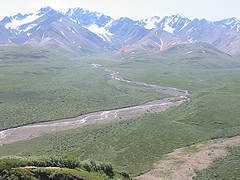Is alcohol illegal in alaska?
 About 30 years ago Alaska's legislature decided to allow local governments to determine the legality of alcohol usage, calling it a local option.
About 30 years ago Alaska's legislature decided to allow local governments to determine the legality of alcohol usage, calling it a local option.
When it was put to a vote, 68% of Alaska's rural communities voted to become dry, while most Alaskan urban areas are either damp (allowing limited import of alcohol for personal use), or wet (communities where alcohol may be purchased in liquor stores, and even grocery stores, for beer and wine).
There are well over 136 dry communities; there are a handful of larger rural communities (called hub communities) that are damp; and then the larger towns like Anchorage, Fairbanks, and Juneau which are wet.
Bootlegging is of course a very lucrative criminal activity in the damp and dry areas. A bottle of liquor that might sell for only $10 in a wet town can cost over $50 in a damp community, and push past $150 in towns that are dry.
In a decade long project, the Alaska Native Tribal Health Consortium, and the State of Alaska Department of Health and Social Services have formed the Healthy Alaskans 2020 initiative which is a project to determine what Alaska-specific health concerns exist. The results conclude that alcohol use and abuse is the number #1 concern to Alaskans.
Rounding out the Top 10 Concerns: Cost of health care, diet exercise and obesity, other substance abuse, violence, community safety, quality of life and well-being, sexuality and reproductive practices, chronic disease related health outcomes, education.
Related Questions
-
Why is alcohol illegal in villages in alaska?
-
Is alcohol prohibeted in alaska?
-
How many miles is it from junea alaska to nome alaska
-
Is it illegal to transport booze into Alaska?
-
What about alaska
-
What animals live in Alaska
-
Any in Alaska?
-
How many miles is it from anchorage alaska to fairbanks alaska
-
is it illegal to smoke weed in alaska
-
How old do you have to be to serve alcohol in alaska